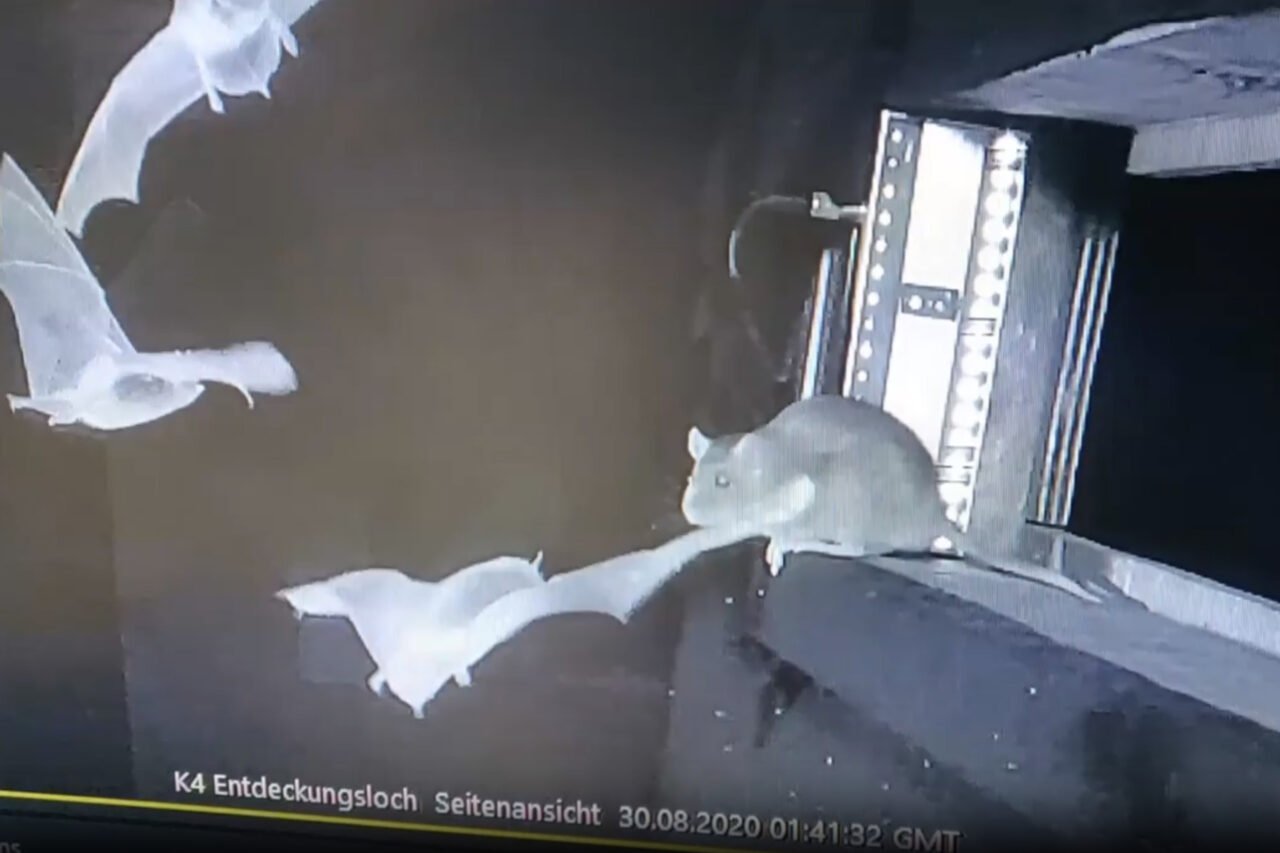Science
Researchers Uncover Alarming Rat Predation on Bats in Germany

A recent study has revealed shocking predatory behavior of brown rats on local bat populations in northern Germany. Researchers from the Global Ecology and Conservation journal documented the alarming interactions between the rats, identified as Rattus norvegicus, and bat species Myotis daubentonii and Myotis nattereri. Their findings indicate that these rats are systematically hunting bats near key hibernation sites, raising significant concerns for the future of bat populations.
Systematic Predation Uncovered
The investigation, which spanned from 2020 to 2024, began with the use of infrared surveillance cameras to monitor rodent behavior near the Segeberger Kalkberg, one of two crucial sites for urban bat populations in the region. Over the course of five weeks, the researchers documented 30 predation attempts, with 13 confirmed bat kills. The study also revealed at least 52 bat carcasses stored by the rats, suggesting not only regular feeding but also possible food hoarding behaviors.
The footage captured distinct hunting tactics employed by the rats. They either intercepted bats in midair or ambushed them after landing, using precise positioning and swift lunges to execute their attacks. If a bat was not killed instantly, the rats would use their forelegs to restrain the bat and deliver a fatal second bite.
Further investigations at the Lüneburger Kalkberg provided more evidence of this predatory behavior, revealing a cache of bat carcasses resembling the earlier findings at the Segeberger site. This consistent pattern suggests a troubling trend of brown rats hunting and storing bats as a food source.
Implications for Bat Populations and Human Health
Although brown rats are not natural predators of bats, their opportunistic feeding habits mean they will consume whatever is available. In some regions, such as near Japanese fish markets, brown rats have been observed with diets consisting of up to 86% fish. This adaptability raises the possibility that while bats may not form the entirety of the rats’ diet, they could still represent a significant portion, leading to potential declines in local bat populations.
Bats play vital ecological roles, including insect control, seed dispersal, and pollination. Their decline could have cascading effects on ecosystems globally. Moreover, both bats and rats are known carriers of numerous pathogens, including coronaviruses. While the study did not investigate the potential for pathogen exchange, the researchers cautioned that the interactions between these two wildlife reservoirs could facilitate the transfer of diseases.
The findings underscore the urgent need for conservation efforts to protect bat populations in northern Germany. As researchers continue to study this alarming predation, the implications for biodiversity and public health remain significant.
-

 World2 weeks ago
World2 weeks agoGlobal Air Forces Ranked by Annual Defense Budgets in 2025
-

 World2 weeks ago
World2 weeks agoMass Production of F-35 Fighter Jet Drives Down Costs
-

 Top Stories2 weeks ago
Top Stories2 weeks agoNew ‘Star Trek: Voyager’ Game Demo Released, Players Test Limits
-

 Top Stories2 weeks ago
Top Stories2 weeks agoDirecTV to Launch AI-Driven Ads with User Likenesses in 2026
-

 Science2 weeks ago
Science2 weeks agoTime Crystals Revolutionize Quantum Computing Potential
-

 World2 weeks ago
World2 weeks agoElectrification Challenges Demand Advanced Multiphysics Modeling
-

 Lifestyle2 weeks ago
Lifestyle2 weeks agoLia Thomas Honored with ‘Voice of Inspiration’ Award at Dodgers Event
-

 Entertainment2 weeks ago
Entertainment2 weeks agoFreeport Art Gallery Transforms Waste into Creative Masterpieces
-

 Lifestyle2 weeks ago
Lifestyle2 weeks agoDiscover Reese Witherspoon’s Chic Dining Room Style for Under $25
-

 Health2 weeks ago
Health2 weeks agoGavin Newsom Critiques Trump’s Health and National Guard Plans
-

 Entertainment2 weeks ago
Entertainment2 weeks agoFast & Furious Coaster Hits the Track at Universal Studios
-

 Health2 weeks ago
Health2 weeks agoResearchers Uncover New Insights into Cancer Mortality Causes









